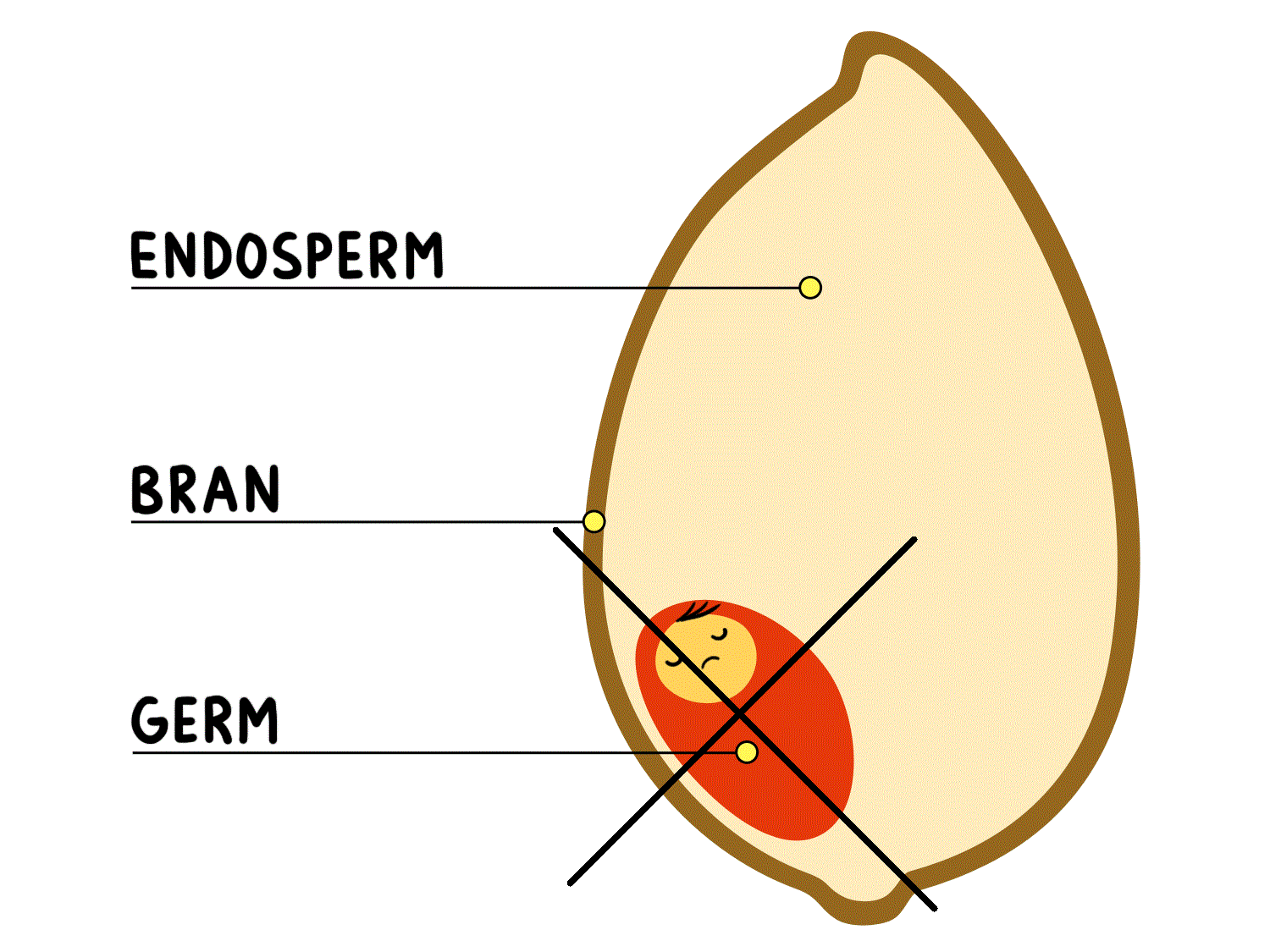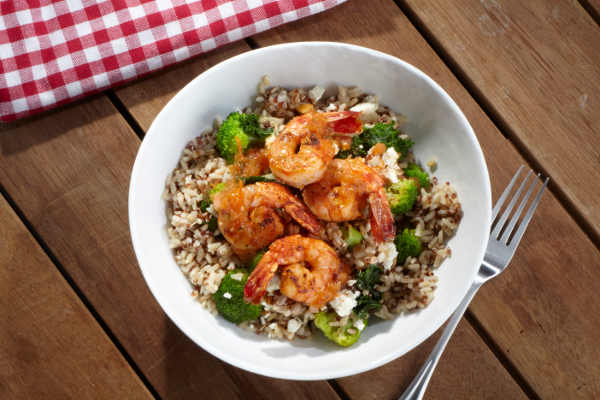Why eat whole grains?
June 26, 2015Warning: Lots of text, but lots of info! Pictures at bottom!
Whole grains get talked about a lot. In the media, on restaurant menus, they seem to be everywhere. Mainly what gets talked about is their healthy benefits and how many “grams of whole grain” are in an item. But what is a whole grain, why should you eat them, and where can you find them? The short answers: whole grains are the complete form of a grain, you should eat them because they are better for you than the alternative, and you can always find whole grains at UFood Grill.
So what is a whole grain?
Simply, a whole grain is the whole, unprocessed form of a grain. Non-whole grain (conventional) products contain the processed form of a grain. But what are they (grain suppliers) processing the grain? See this diagram of a whole wheat berry, which is the raw form of wheat after harvest (I know its cutesy, but it gets the point across really well):

When grains are grown and harvested, they are in their “whole” form, meaning they have a tough coating on the outside called the bran, a starchy interior called the endosperm, and a little nugget called the germ which turns the grain into a plant.
All grains- wheat, rice, barley, triticale, rye, amaranth, farro, semolina, quinoa, etc; all have this raw form of which they are harvested! So for every grain, there is a raw whole form available.
Conventional grains are processed to remove the germ and bran, leaving just the endosperm. There is a long history of why in modern society we started to remove t he bran and germ from grains after harvest, but it basically it comes down to taste preference, looks, and consistency. For all of human history, whole grains were seen as a poor mans grain, where those that could afford to further process and thus throw away some grain, did so. Plus whole grains can taste a little more bitter, due in part to the healthy parts tasting that way naturally (there are easy ways to make this a non issue).
he bran and germ from grains after harvest, but it basically it comes down to taste preference, looks, and consistency. For all of human history, whole grains were seen as a poor mans grain, where those that could afford to further process and thus throw away some grain, did so. Plus whole grains can taste a little more bitter, due in part to the healthy parts tasting that way naturally (there are easy ways to make this a non issue).
So why should you eat them?
The parts that are discarded for conventional grains happen to be the most nutritionally beneficial; a good analogy for this is the apple peel- apple skin contains vitamins, minerals, and fiber but it is all usually thrown out for the sake of flavor and look in apples/ apple products.
The bran and endosperm contain a number of valuable body beneficial nutrients such as b vitamins, dietary fiber, iron, magnesium, and a host of other good things (more info at http://www.choosemyplate.gov/food-groups/grains-why.html). This “good stuff” in grains can potentially reduce your risk of heart disease, weight gain, and gastrointestinal issues.
On top of that though, whole grains fit in well as a critical part of the UFood Grill philosophy- don’t mess around with the food too much and let it stand on its own and you will have delicious, exciting food that makes you feel good.
You can find whole grain versions of breads, flours, and other products every nowadays, but they still seem avoid fast casual restaurants. Except at UFood.
Whole Grains at UFood Grill
All grain based products at UFood Grill are whole grain. It has been my mission since I started with this restaurant to make every product whole grain to gain some health benefits. Our burgers, panini, flatbreads wraps, and grain bowls; even our breakfast items all are whole grain only!
Have a great weekend everyone! EAT SOME WHOLE GRAINS!




